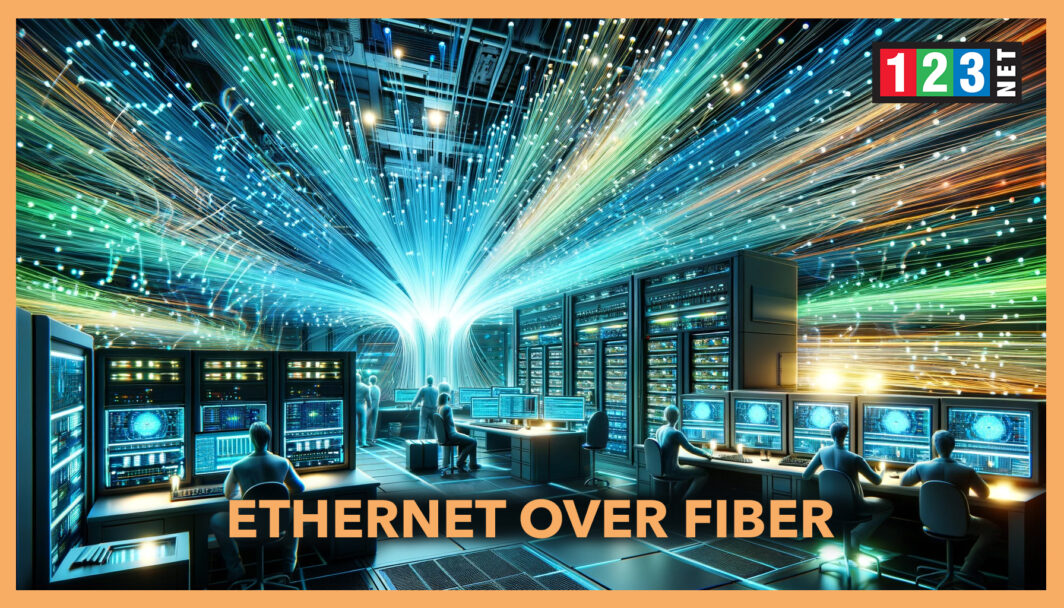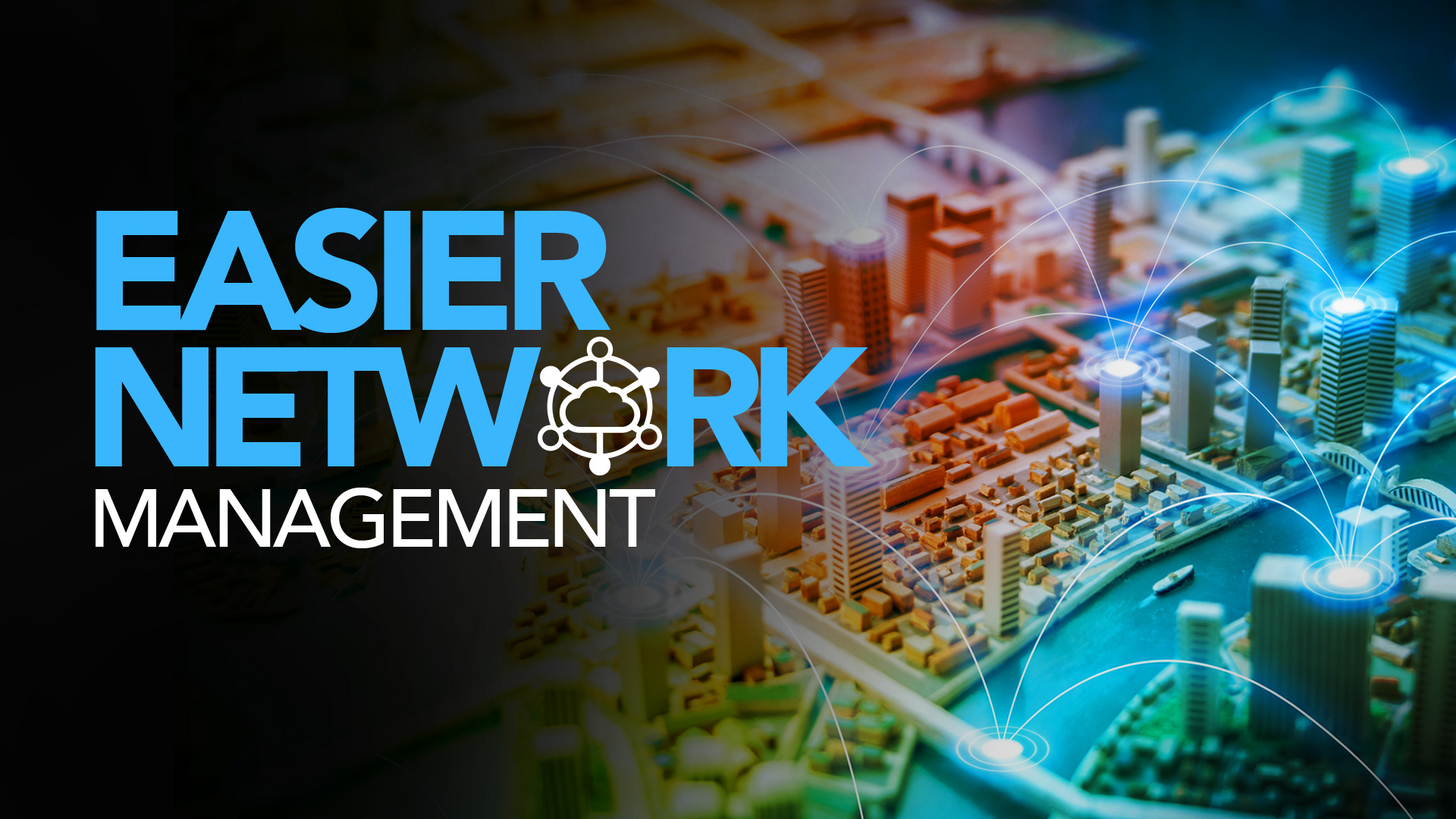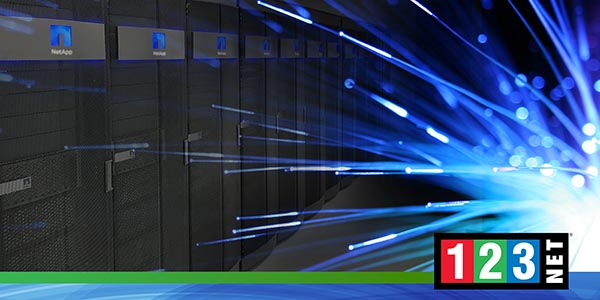
Introduction to Ethernet over Fiber
Ethernet over Fiber represents a transformative advancement in the realm of digital communication, seamlessly blending the time-tested reliability of Ethernet. This approach to data transmission harnesses the power of fiber-optic cables, a significant departure from the conventional copper. These fiber-optic cables enabling data to be transmitted at incredibly high speeds, akin to the rates high-speed internet services.
The core of Ethernet over Fiber’s innovation lies in its use of light to transmit data. Unlike electrical signals transmitted, light signals in fiber-optic cables maintain their integrity over much greater distances and speeds. This evolving fiber-optic technology enables rapid, high-volume data transfer without signal degradation.
The inception was more than just a technological upgrade; it marked a moment in the evolution of network infrastructure. The limitations of copper-based Ethernet bottlenecked as bandwidth and internet speed demands grew exponentially. Ethernet over Fiber emerged as a solution that not only addressed these limitations but also set a new standard.
Technical Overview of Ethernet over Fiber
Ethernet over Fiber operates on a fundamentally different principle compared to traditional Ethernet technologies. At its core, it involves the conversion of electrical signals into light, which is then transmitted through fiber-optic cables. This conversion is achieved using sophisticated optical transceivers that encode and decode digital data into light pulses. These light pulses travel at the speed of light through the fiber-optic cables.
The technology adheres to a set of specific standards and protocols, for its security and reliability. These standards cover wavelength, encoding, and error correction methods. This adherence to standards ensures that Ethernet over Fiber is compatible with a wide range of networking equipment.
One of the most striking features of Ethernet over Fiber is its impressive bandwidth capacity.
It supports speeds of up to 400 Gbit/s, orders of magnitude beyond traditional copper Ethernet.
This high bandwidth revolutionizes data-intensive tasks like HD video streaming, cloud computing, and telecommunications, ensuring efficient, low-latency data transfer.
Advantages of Ethernet over Fiber
The primary benefits of Ethernet over Fiber include its high bandwidth capacity and extensive reach. This innovative technology can transmit data over several kilometers, a feat standard Ethernet cannot match. This extended reach is valuable for long-distance communication, such as connecting buildings in a campus or linking data centers across wide areas.
High Bandwidth Capacity
It can support incredibly high data transfer rates, making it an ideal solution for bandwidth-intensive applications. In an era where the volume of data being transferred and processed is increasing exponentially, Ethernet over Fiber provides the necessary infrastructure to handle such demands efficiently. This is especially crucial in sectors like healthcare, finance, and education, where large amounts of data need to be transmitted quickly and reliably.
Immunity
Another key benefit of Ethernet over Fiber is its immunity to electromagnetic interference (EMI). Copper cables, used in traditional Ethernet, are susceptible to EMI, which can degrade the quality of the signal and lead to data loss or transmission errors. This is not the case with fiber-optic cables, which are impervious to such interferences. This feature ensures that Ethernet over Fiber provides consistent and reliable network connectivity, which is vital for critical applications in various sectors, including telecommunications, military, and aerospace.
Moreover, Ethernet over Fiber plays a pivotal role in supporting the infrastructure of high-speed internet. In our increasingly connected world, the demand for fast and reliable internet connectivity is ever-growing. Ethernet over Fiber meets this demand by providing the backbone for robust and scalable network systems. It enables internet service providers to offer higher bandwidth options to customers, thereby enhancing user experience and supporting the growth of internet-based services and applications
Applications and Use Cases
Ethernet over Fiber technology has found widespread applications across various sectors, demonstrating its versatility and efficiency in handling modern data needs. In enterprise environments, it has become a cornerstone technology, facilitating seamless connectivity across expansive corporate campuses. This is particularly crucial in today’s business landscape, where the volume of data traffic has grown exponentially. Companies rely on robust network infrastructure to support their daily operations, from cloud computing and virtual meetings to large-scale data analysis. Ethernet over Fiber meets these demands by providing a high-speed, reliable network backbone that can handle the heavy data traffic typical of modern businesses.
In the realm of data centers, Ethernet over Fiber is indispensable. These facilities, which are the heart of data storage and processing for countless businesses and services, require the fastest and most reliable connections available. Ethernet over Fiber offers high-speed connections between servers, ensuring efficient data handling, storage, and retrieval. This is critical in an age where data centers not only store vast amounts of information but also perform complex processing tasks and real-time data analytics. The technology’s ability to support high bandwidth and low latency connections makes it ideal for these intensive applications.
Telecommunication companies also heavily utilize Ethernet over Fiber to enhance their network infrastructure. In a world increasingly reliant on digital communication, the demand for faster and more reliable internet services is at an all-time high. Ethernet over Fiber allows these companies to upgrade their networks, providing customers with high-speed internet services that are more reliable and consistent. This upgrade is essential not only for individual consumers who demand fast internet for streaming and gaming but also for businesses that depend on cloud services and online platforms for their operations.
Implementation Challenges and Considerations
While Ethernet over Fiber offers a plethora of benefits, its implementation is not without its challenges. The initial setup of fiber-optic networks, for instance, can be a complex and costly endeavor. This complexity stems from the need for specialized equipment that is capable of handling the delicate nature of fiber-optic cables. Unlike traditional copper cables, fiber optics require precise handling and installation techniques to avoid damage and ensure optimal performance. This necessitates the involvement of skilled technicians who are trained in fiber-optic technology, adding to the labor costs of the installation process.
Maintenance and Installation
Maintenance of fiber-optic networks also presents its own set of challenges. Fiber-optic cables, while robust in data transmission, can be physically delicate. They are susceptible to damage from environmental factors such as extreme weather conditions or physical interference. Regular maintenance is therefore essential to ensure the network’s longevity and reliability. This ongoing maintenance requires not only specialized equipment to diagnose and repair issues but also a team of technicians with expertise in fiber-optic technology.
Cost-Benefit Analysis
Organizations considering the transition to Ethernet over Fiber must also conduct a thorough cost-benefit analysis. This analysis should take into account not only the initial capital expenditure for equipment and installation but also the long-term operational costs, including maintenance. The decision to deploy Ethernet over Fiber should be based on a clear understanding of the return on investment, considering factors such as improved network performance, increased productivity, and potential future savings on network upgrades.
Compatibility
Another significant challenge in the implementation of Ethernet over Fiber is ensuring compatibility with existing network infrastructure. Many organizations have legacy systems and network equipment that may not be immediately compatible with fiber-optic technology. Integrating new fiber technology with these older systems can pose technical hurdles. It may require additional investments in compatible hardware or software, or even a complete overhaul of the existing network infrastructure. This integration process must be carefully planned and executed to minimize disruptions to the organization’s operations and to ensure a smooth transition to the new technology.
Future Trends and Developments
The continuous advancements in optical fiber technology inextricably link with the future of Ethernet over Fiber. As the digital era progresses, the demand for higher bandwidth and faster internet speeds is escalating, pushing Ethernet over Fiber towards new horizons of development and innovation. This technology isn’t just adapting to current demands; it stands ready to redefine the standards of network connectivity by offering even greater capacities and efficiencies.
Capacity and Efficiency
The evolution of Ethernet over Fiber will likely feature significant enhancements in both capacity and efficiency. High-speed data transmission is vital in an era where rapid, data-intensive applications like streaming, cloud computing, and virtual reality abound. As the demand for robust, fast connections grows with increasing device connectivity, Ethernet over Fiber stands ready to scale and meet these demands.
5G
5G technology promises to revolutionize the way we connect and interact with the internet, offering unprecedented speeds and reliability. However, the success of 5G is heavily reliant on the underlying network infrastructure’s ability to handle increased data loads. Ethernet over Fiber is the ideal backbone for 5G, with high bandwidth and low latency, ensuring support for 5G’s data-heavy, speed-centric nature.
Designs
Future developments in Ethernet over Fiber are also likely to include significant enhancements in fiber-optic cable design and transmission techniques. Innovations in cable composition, could reduce signal loss and extend transmission distances. Advancements in transmission techniques, may exponentially boost fiber-optic cable data capacity.
These enhancements extend beyond just technical capabilities, also embracing broader applications and accessibility. As Ethernet over Fiber technology advances, it will likely become more cost-effective and simpler to deploy. This democratization of technology will enable a wider range of businesses and consumers to access high-speed and reliable internet connectivity.
FAQs
- What’s the maximum distance Ethernet over Fiber covers? A: Ethernet over Fiber spans several kilometers, surpassing traditional Ethernet.
- How does Ethernet over Fiber compare to wireless? A: Ethernet over Fiber excels in bandwidth, reliability, and security.
- Can Ethernet over Fiber be used in homes? A: Absolutely, especially where high-speed internet is essential. Implementation depends on local infrastructure availability and costs.




